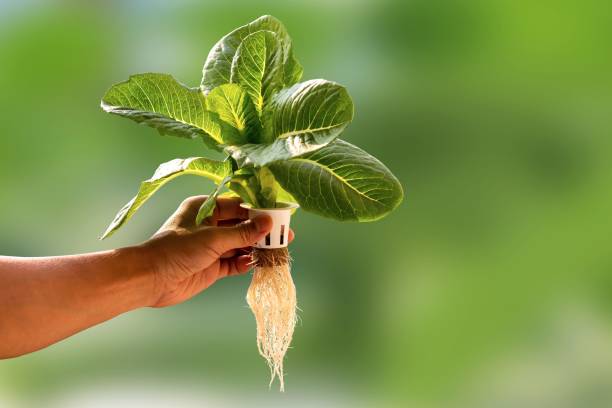How Plant Roots Take In Water and Nutrients?

Roots play a vital role in the growth and development of plants, serving as the primary means through which water and nutrients are absorbed from the soil. To comprehend how roots facilitate this process, it is important to explore root anatomy, the mechanisms of water and nutrient movement within roots, and the beneficial relationship between roots and mycorrhizal fungi.
Root Anatomy:
Plant roots consist of various specialized structures that enable efficient water and nutrient uptake. At the tip of the root, the root cap protects delicate cells as they penetrate the soil. The root hairs, tiny projections along the root surface, greatly increase the root's surface area for absorption. Moving upward, the region called the root cortex contains cells that store nutrients and facilitate water movement.
The World of Roots: Below the soil surface, roots extend their reach, exploring the surrounding environment in search of water and nutrients. They dynamically respond to chemical signals and environmental cues, guiding their growth toward resources. The root system's branching structure allows for extensive exploration and exploitation of soil resources, ensuring the plant's survival and growth.
Symplastic vs. Apoplastic Movement of Water and Nutrients in Roots:
Water and nutrients can move through roots using two pathways: symplastic and apoplastic. In the symplastic pathway, water and nutrients move through interconnected living cells via plasmodesmata, microscopic channels that connect the cytoplasm of adjacent cells. This movement occurs within the living parts of the root, such as the endodermis and the cortex. In contrast, the apoplastic pathway involves water and nutrients moving through non-living spaces, such as cell walls and the extracellular matrix. This pathway allows for efficient movement through the root, especially in the outer layers.
Mycorrhizae:
Roots' Fungal Friend: Mycorrhizal fungi form a mutualistic association with plant roots, benefiting both parties. These fungi extend their thread-like structures called hyphae into the soil, greatly expanding the root's reach for water and nutrients. In return, the fungi receive carbohydrates produced by the plant through photosynthesis. This symbiotic relationship enhances nutrient uptake, improves water absorption, and promotes overall plant health and resilience.
Understanding how plant roots take in water and nutrients provides valuable insights into optimizing agricultural practices, promoting sustainable growth, and mitigating nutrient deficiencies. By studying root anatomy, appreciating the complex processes within roots, and harnessing the benefits of mycorrhizae, scientists and farmers can enhance plant productivity and contribute to a greener and more productive future.
